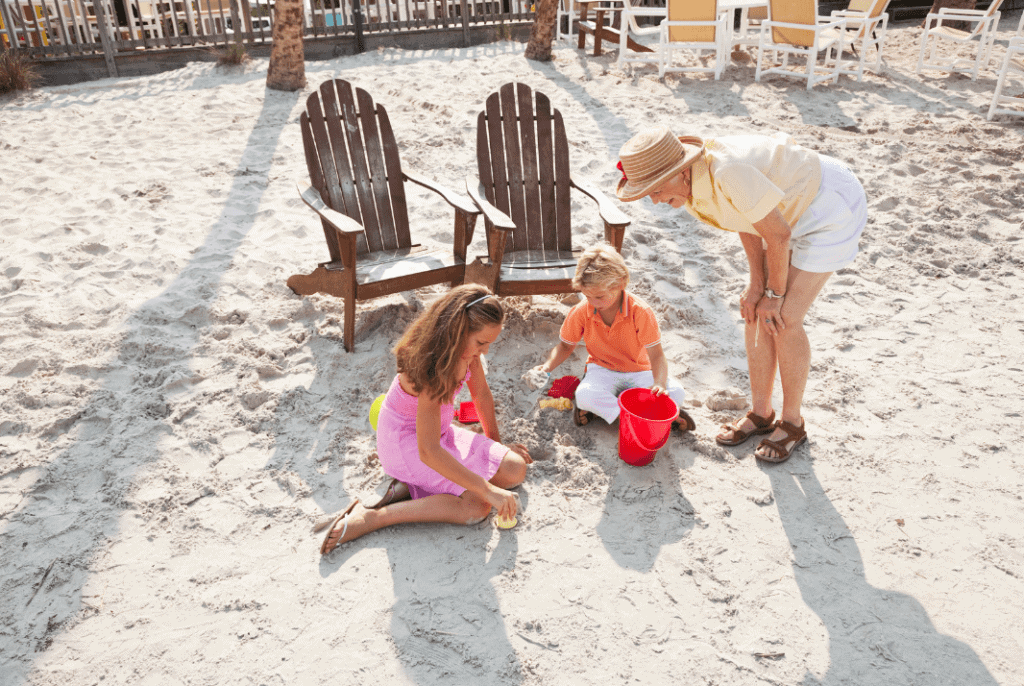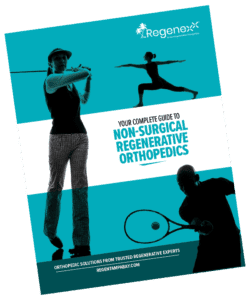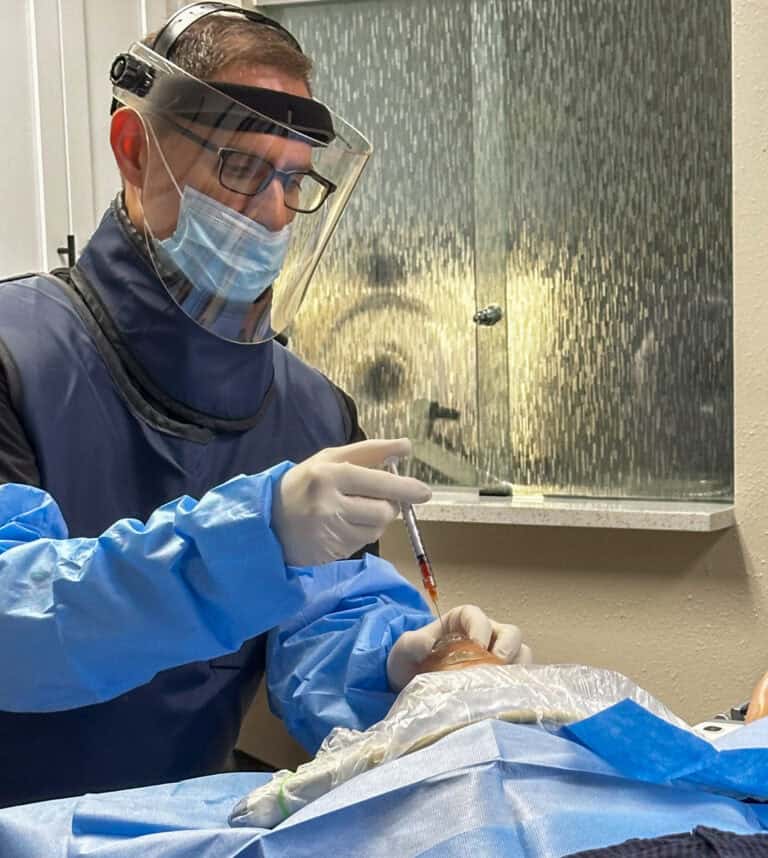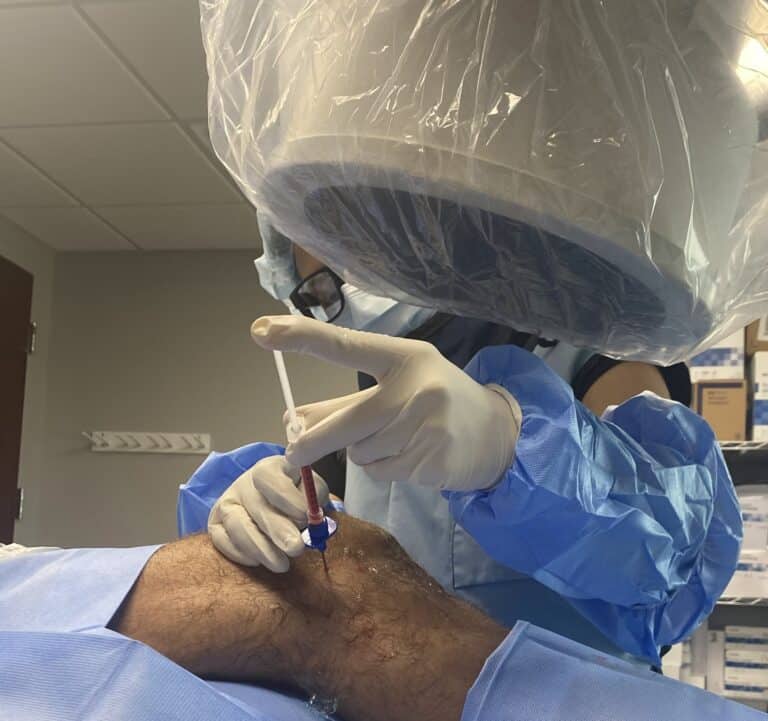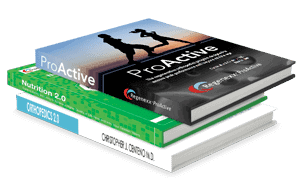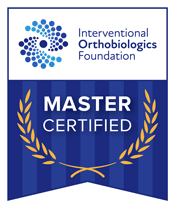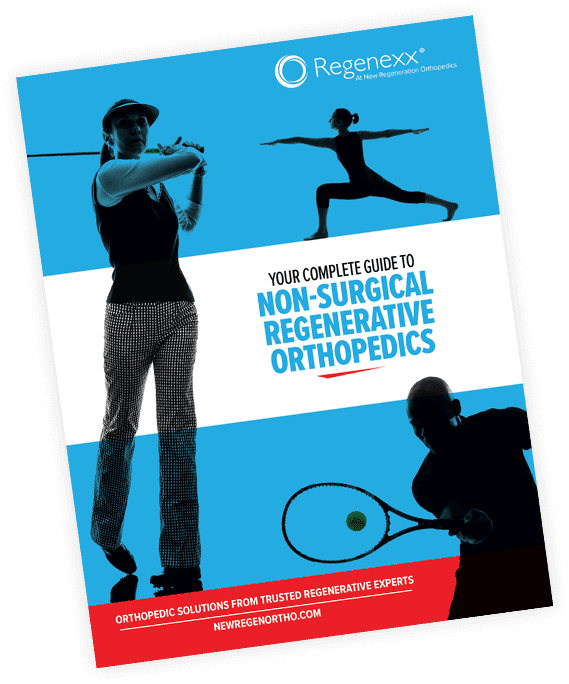Meet Lois, a patient and success story we are excited to introduce because one of the most common conditions we see at Regenexx at New Regeneration Orthopedics of Florida is bone-on-bone knee arthritis. Patients who come in with this condition are usually having so much discomfort, they’re exploring a knee replacement, or an alternative to prevent that knee replacement. Lois is one such person who was interested in doing everything possible to avoid a knee replacement, and that’s how Lois met Dr. Torrance.
Are Knee Replacements the Only Choice?
Lois was referred to Regenexx in St. Petersburg by her functional medicine physician at Robinson MD, after she mentioned her left knee was a source of constant pain. The pain was most troublesome because it would limit her ability to go on walks with her husband and play with her four grandchildren. Before meeting with Dr. Torrance Lois had been recommended by an orthopedic surgeon to get bilateral knee replacement surgery. The goal was to avoid those surgeries, if at all possible.
When meeting with Dr. Torrance, Lois described her pain a 7 to 9 out of 10 on a pain scale and as in the inside of her left knee. The pain would show up as stiffness and pain limiting her ability to be an active 73-year old who wants to walk long distances, get up and down off the floor, playing on the beach with grandkids, and other physical activities required to keep up with them. Lois explained she has a history of a partial meniscectomy on the left medial meniscus and she also had a surgical fusion of her great toe on the left foot. Dr. Torrance did a physical examination on the knee in the office along with a diagnostic ultrasound evaluation and he found her restricted in knee flexion, and with pain in the knee joint on several orthopedic tests. Dr. Torrance ordered an MRI to follow up on his examination.
The Regenerative Option
The MRI revealed ongoing fraying and degeneration of both the remaining medial and lateral menisci. It also showed grade 4 (severe) degeneration of the cartilage of the lateral and medial articular margins of the knee where the upper leg bone meets the lower leg bone. There was also moderate to severe loss of cartilage behind the knee cap, with arthritis. In short, this knee qualifies as bone-on-bone and the pain Lois experienced in her everyday life definitely correlated with these findings. Dr. Torrance told Lois she was a candidate for a Regenexx procedure, and he recommended a bone marrow concentrate (BMC) injection into the areas of decreased cartilage and arthritis. She was eager to take advantage of an opportunity to avoid a knee replacement surgery and get back to the activities she wanted.
Lois’s procedure to her left knee included BMC and Platelet Rich Plasma (PRP) into both femoral condyles (upper leg bone) and medial/lateral tibial plateau (lower leg bone), the knee cap, the medial meniscus, and the anterior cruciate ligament (ACL). The areas treated were to address the areas of pain, inflammation, severe degenerative changes, as well as instability. After 1-2 weeks of recovery, Lois was prescribed to start physical therapy.
Post-Procedure Therapy
Lois began traditional physical therapy, but after several weeks found the initial benefit was waning and she was developing soreness in a new spot in her left knee. After three months in traditional PT, Dr. Torrance referred her to Love Health to work with me, Dr. Perone. In our initial evaluation, I was able to discover some pretty glaring functional deficiencies that were stunting Lois’s full recovery at the inside of her knee. She had a lot of tightness in her quad muscles, weakness in the hip muscles, and stiffness in the foot and ankle. We began a weekly regimen of manual therapy to the areas I described and I assigned Lois targeted exercises to mobilize her quad, foot and ankle, while strengthening her hips and gluteal muscles. Each week we worked together, we would review the set of exercises that Lois was to complete at home between our sessions. We would review technique if there was difficulty, and progress/regress the difficulty as needed.
After 6 months of working together, the effects from the procedure were shining through and Lois was able to keep up with her granddaughters a lot more, including playing down on the floor and joining them at the playground. However, there was still just one spot on the side of the knee that would be painful for a moment when changing position from sitting to standing, and when going on half-mile walks with her husband. We kept working on the tissues associated with this area and focused on gluteal and core activation, but I referred her back to Dr. Torrance to evaluate a structure called the pes anserine.The pes anserine is a junction of three tendons at the medial knee, and when these muscles are overused, they can cause inflammation of a bursa that is located in the attachment site.
The Booster
Dr. Torrance found on diagnostic ultrasound that there was pes anserine bursitis. So, to get Lois the last 5-10% of pain relief she was seeking, he did a diagnostic injection into the pes anserine bursa and it relieved the pain she was experiencing. He could confidently recommend a PRP booster to the knee, with a focus on the pes anserine bursa, to get Lois where she wanted to be. A “booster” is a follow-up injection of PRP into the original treatment areas a few months after the original procedure to help boost the ongoing regenerative effects.
Six weeks after the booster, she had a follow up with Dr. Torrance and Lois reported the last bit of pain before the booster had now been resolved. She explained she was continuing biweekly therapy with Dr. Perone, and feeling very few limitations from pain. The ongoing work we did at Love Health from here was a mobility focus for the quadriceps and lower leg as well as continued core and glute stability.
Lois’s Outcome
When discussing Lois’s success story with her, she listed out all of the activities she is now able to enjoy, but felt like an impossibility before her procedure. Since her knee dramatically improved, she has been able to to:
- Enjoy walks with her husband
- Swim and exercise
- Play with granddaughters in the pool
- Beach getaways with her family, including long beach walks
- Getting down and playing on the floor with her grandchildren
- Pushing the children on swings and keeping up with them on the playground
- Dancing!
- Visit walking-intensive attractions like the Florida Aquarium and Disney World.
Later this year, Lois is most excited that she feels ready to take on her first European vacation since her knee’s recovery. She and her husband will visit Lake Como, Italy, and take the Rhine River cruise to Germany, France, and the Netherlands. She is most excited about the fact she feels confident in the amount of walking she will do when sight-seeing and wine tasting.
When I think of what made Lois’s story such a shining example of a successful Regenerative procedure, there are three major reasons she’s doing so well. Dr. Torrance always says, “a successful procedure requires a trifecta of a great patient, a skilled clinician, and a great therapist.” Lois is a shining example of a great patient. She is open-minded, very good at following instructions and recommendations from her care team, and diligent about “homework” that is assigned to her. Her efforts, dilated in with a focused care team set her up for success in her procedures.
The Takeaway?
This type of success story is one of our favorites: a patient who is able to reach functional goals with virtually no pain, but also that a major surgery – with potential risks – was avoided. Now we are excited to say “Bon Voyage!” to Lois as she embarks on her European River Cruise and sight-seeing knowing she has an improved knee and the strategies to take on the sightseeing!
If this sounds like a condition you or someone you love is living with, we would love the opportunity to evaluate your case to see if you’re a candidate for a Regenexx procedure. At New Regeneration Orthopedics of Florida physician would be happy to see you in one of our offices in Orlando, Tampa, St. Petersburg, or Sarasota.
